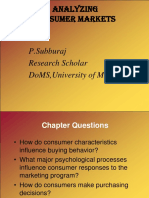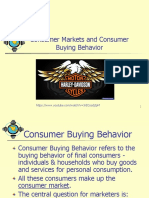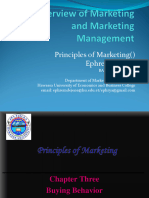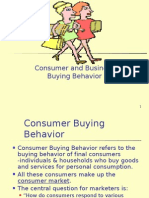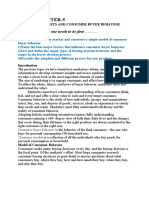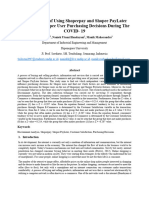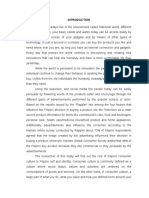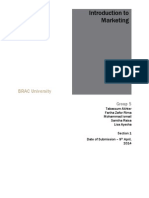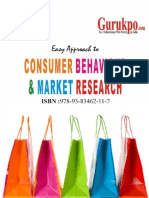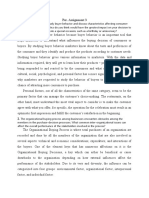0% found this document useful (0 votes)
37 views9 pagesChapter 5 Notes
Chapter 5 discusses consumer markets and buyer behavior, outlining the factors influencing consumer purchasing decisions, including cultural, social, personal, and psychological factors. It also describes the buying decision process, the adoption process for new products, and the diffusion of innovation theory, highlighting the importance of targeting early adopters and offering trials to encourage product adoption. Key marketing strategies are provided to enhance the success of new products in the market.
Uploaded by
Awais HussainCopyright
© © All Rights Reserved
We take content rights seriously. If you suspect this is your content, claim it here.
Available Formats
Download as DOCX, PDF, TXT or read online on Scribd
0% found this document useful (0 votes)
37 views9 pagesChapter 5 Notes
Chapter 5 discusses consumer markets and buyer behavior, outlining the factors influencing consumer purchasing decisions, including cultural, social, personal, and psychological factors. It also describes the buying decision process, the adoption process for new products, and the diffusion of innovation theory, highlighting the importance of targeting early adopters and offering trials to encourage product adoption. Key marketing strategies are provided to enhance the success of new products in the market.
Uploaded by
Awais HussainCopyright
© © All Rights Reserved
We take content rights seriously. If you suspect this is your content, claim it here.
Available Formats
Download as DOCX, PDF, TXT or read online on Scribd
/ 9


